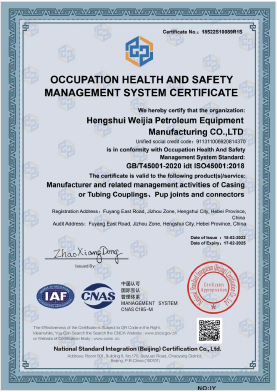- Afrikaans
- Albanian
- Amharic
- Arabic
- Armenian
- Azerbaijani
- Basque
- Belarusian
- Bengali
- Bosnian
- Bulgarian
- Catalan
- Cebuano
- Corsican
- Croatian
- Czech
- Danish
- Dutch
- English
- Esperanto
- Estonian
- Finnish
- French
- Frisian
- Galician
- Georgian
- German
- Greek
- Gujarati
- Haitian Creole
- hausa
- hawaiian
- Hebrew
- Hindi
- Miao
- Hungarian
- Icelandic
- igbo
- Indonesian
- irish
- Italian
- Japanese
- Javanese
- Kannada
- kazakh
- Khmer
- Rwandese
- Korean
- Kurdish
- Kyrgyz
- Lao
- Latin
- Latvian
- Lithuanian
- Luxembourgish
- Macedonian
- Malgashi
- Malay
- Malayalam
- Maltese
- Maori
- Marathi
- Mongolian
- Myanmar
- Nepali
- Norwegian
- Norwegian
- Occitan
- Pashto
- Persian
- Polish
- Portuguese
- Punjabi
- Romanian
- Russian
- Samoan
- Scottish Gaelic
- Serbian
- Sesotho
- Shona
- Sindhi
- Sinhala
- Slovak
- Slovenian
- Somali
- Spanish
- Sundanese
- Swahili
- Swedish
- Tagalog
- Tajik
- Tamil
- Tatar
- Telugu
- Thai
- Turkish
- Turkmen
- Ukrainian
- Urdu
- Uighur
- Uzbek
- Vietnamese
- Welsh
- Bantu
- Yiddish
- Yoruba
- Zulu
Exploring the Advantages of Female Threaded Couplings in Various Industrial Applications and Connections
Understanding Female Threaded Coupling A Key Component in Mechanical Engineering
Female threaded coupling, also known as a female coupling or female threaded connector, is an essential component in various engineering and plumbing applications. This device plays a crucial role in establishing secure and leak-proof connections between pipes or hoses. In this article, we will explore the design, applications, and benefits of female threaded couplings, highlighting their importance in different industries.
Design and Structure
A female threaded coupling is characterized by its internal threads that allow it to connect with male threaded fittings. Typically made of materials such as brass, stainless steel, plastic, or aluminum, these couplings are designed to withstand high pressures and temperatures, depending on the application's requirements. The internal threads are finely engineered to ensure a snug fit with the corresponding male fittings, minimizing the risk of leakage.
The design of female threaded couplings varies based on the intended use. They can come in various sizes and shapes, such as straight or reducing couplings. Straight couplings maintain the same diameter, while reducing couplings allow for a transition from a larger diameter pipe to a smaller one. This versatility makes them a critical component in system design and optimization.
Applications
Female threaded couplings are widely utilized across different sectors, including plumbing, automotive, oil and gas, and manufacturing. In plumbing, they facilitate the connection between water pipes, ensuring that water supply systems operate efficiently and without leaks. In the automotive industry, these couplings are essential for various fluid transfer systems, where secure and reliable connections are crucial for performance and safety.
female threaded coupling

In the oil and gas industry, female threaded couplings are vital for connecting pipelines and equipment, as they can handle high-pressure and corrosive environments. Additionally, in manufacturing, they are used in various machinery to connect hydraulic lines, ensuring that fluids are transported effectively and safely.
Benefits
The use of female threaded couplings offers several advantages. One of the primary benefits is the ease of installation. These couplings can be easily screwed onto male fittings, allowing for quick assembly and disassembly when maintenance or repair is needed. This characteristic is particularly valuable in industries where downtime must be minimized.
Furthermore, female threaded couplings provide a robust and leak-proof connection when properly installed. Their designs often feature O-rings or gaskets that enhance sealing capabilities, preventing leaks under pressure. This reliability is crucial, especially in applications involving liquids or gases that could pose safety hazards if spilled or released.
Another significant advantage is their adaptability. Female threaded couplings can be used in various combinations with other fittings, such as elbows and tees, allowing engineers to create complex piping systems tailored to specific requirements.
Conclusion
In conclusion, female threaded couplings are a fundamental part of modern engineering and plumbing systems. Their design, versatility, and reliability make them indispensable in many applications across numerous industries. As technology continues to evolve, the materials and designs of these couplings are likely to improve, enabling even more efficient and secure connections. Understanding the importance of female threaded couplings is crucial for engineers, technicians, and anyone involved in fluid systems, underscoring their role in ensuring functionality and safety in various applications.
-
Tubing Pup Joints: Essential Components for Oil and Gas OperationsNewsJul.10,2025
-
Pup Joints: Essential Components for Reliable Drilling OperationsNewsJul.10,2025
-
Pipe Couplings: Connecting Your World EfficientlyNewsJul.10,2025
-
Mastering Oilfield Operations with Quality Tubing and CasingNewsJul.10,2025
-
High-Quality Casing Couplings for Every NeedNewsJul.10,2025
-
Boost Your Drilling Efficiency with Premium Crossover Tools & Seating NipplesNewsJul.10,2025







